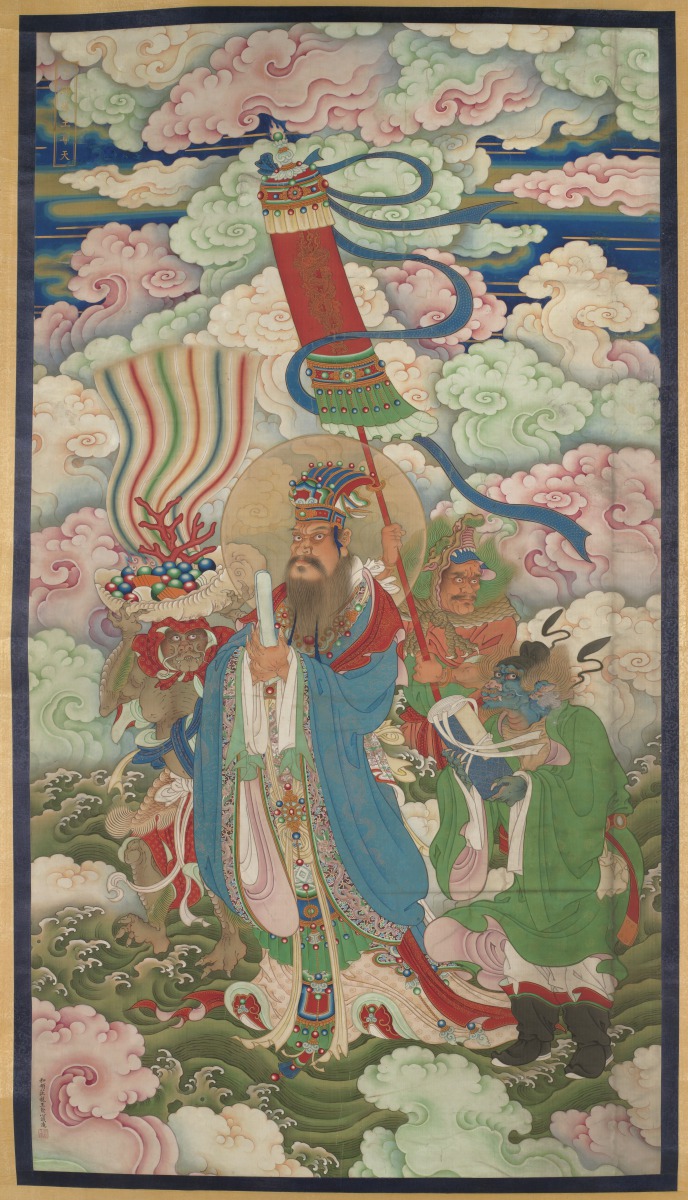
Venerable Celestial King Sagara (Translation)
娑竭罗王尊天像軸 清中期 佚名 絹本設色描金 (Primary Title)
King Sagara (Former Title)
hanging scroll (Object Name)
Unknown (Artist)
According to Hindu legend, King Sagara (“water” in Sanskrit) governed the ancient city of Ayodhya and the state of Uttar Pradesh in northern India in the 7th century BC. This painting depicts the victorious king descending from clouds with his monster-like attendants who hold exotic tributes and ocean treasures. The scene is associated with the Buddhist water-and-land ritual in which paintings of gods, human beings, and demons are presented at a ceremony for the salvation of all beings. Developed in the 12th century during the Song dynasty, this ritual was a favorite in the Ming and Qing courts. An inscription at the lower right indicates the scroll was commissioned by the imperial prince. According to its style, this painting was most likely commissioned by Prince Yunlu (1695–1767), a court official in charge of rituals, music, and publications in the Qing court.
Qing dynasty, Qianlong period (1736–1795)
None
莊親王寶 Zhuang qinwang bao (Prince Zhuang’s treasure)
Upper left: 娑竭罗王尊天像 (Venerable Celestial King Sagara)
Lower left: 和碩莊親王發心誠造 (Respectfully made by Prince Zhuang, Boggodo)
Arthur and Margaret Glasgow Fund
Image released via Creative Commons CC-BY-NC
Some object records are not complete and do not reflect VMFA's full and current knowledge. VMFA makes routine updates as records are reviewed and enhanced.
